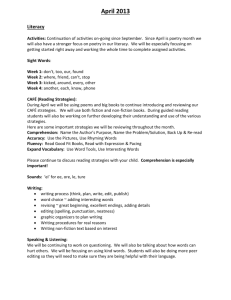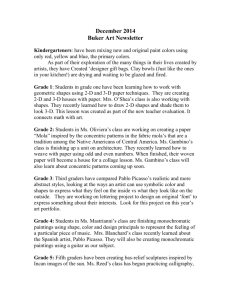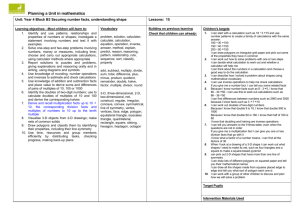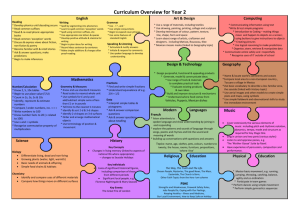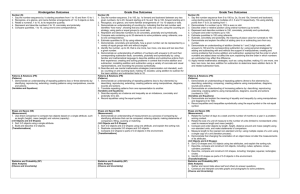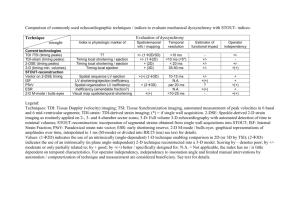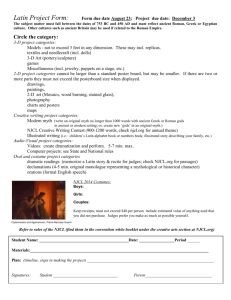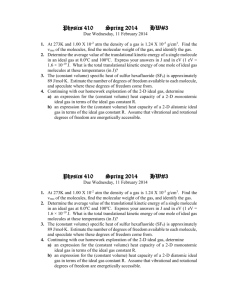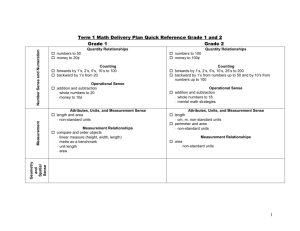Beginning – 1
advertisement
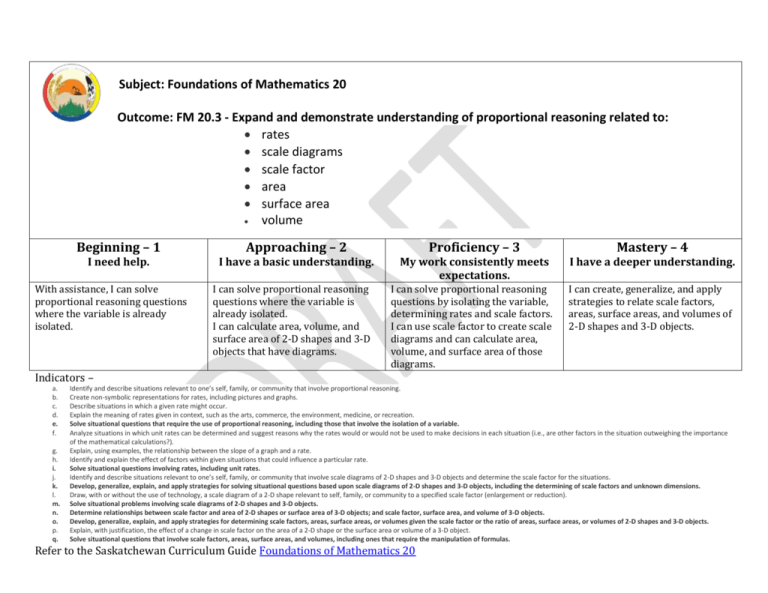
Subject: Foundations of Mathematics 20 Outcome: FM 20.3 - Expand and demonstrate understanding of proportional reasoning related to: rates scale diagrams scale factor area surface area volume Beginning – 1 Approaching – 2 Proficiency – 3 Mastery – 4 I need help. I have a basic understanding. My work consistently meets expectations. I have a deeper understanding. I can solve proportional reasoning questions by isolating the variable, determining rates and scale factors. I can use scale factor to create scale diagrams and can calculate area, volume, and surface area of those diagrams. I can create, generalize, and apply strategies to relate scale factors, areas, surface areas, and volumes of 2-D shapes and 3-D objects. With assistance, I can solve proportional reasoning questions where the variable is already isolated. I can solve proportional reasoning questions where the variable is already isolated. I can calculate area, volume, and surface area of 2-D shapes and 3-D objects that have diagrams. Indicators – a. b. c. d. e. f. g. h. i. j. k. l. m. n. o. p. q. Identify and describe situations relevant to one’s self, family, or community that involve proportional reasoning. Create non-symbolic representations for rates, including pictures and graphs. Describe situations in which a given rate might occur. Explain the meaning of rates given in context, such as the arts, commerce, the environment, medicine, or recreation. Solve situational questions that require the use of proportional reasoning, including those that involve the isolation of a variable. Analyze situations in which unit rates can be determined and suggest reasons why the rates would or would not be used to make decisions in each situation (i.e., are other factors in the situation outweighing the importance of the mathematical calculations?). Explain, using examples, the relationship between the slope of a graph and a rate. Identify and explain the effect of factors within given situations that could influence a particular rate. Solve situational questions involving rates, including unit rates. Identify and describe situations relevant to one’s self, family, or community that involve scale diagrams of 2-D shapes and 3-D objects and determine the scale factor for the situations. Develop, generalize, explain, and apply strategies for solving situational questions based upon scale diagrams of 2-D shapes and 3-D objects, including the determining of scale factors and unknown dimensions. Draw, with or without the use of technology, a scale diagram of a 2-D shape relevant to self, family, or community to a specified scale factor (enlargement or reduction). Solve situational problems involving scale diagrams of 2-D shapes and 3-D objects. Determine relationships between scale factor and area of 2-D shapes or surface area of 3-D objects; and scale factor, surface area, and volume of 3-D objects. Develop, generalize, explain, and apply strategies for determining scale factors, areas, surface areas, or volumes given the scale factor or the ratio of areas, surface areas, or volumes of 2-D shapes and 3-D objects. Explain, with justification, the effect of a change in scale factor on the area of a 2-D shape or the surface area or volume of a 3-D object. Solve situational questions that involve scale factors, areas, surface areas, and volumes, including ones that require the manipulation of formulas. Refer to the Saskatchewan Curriculum Guide Foundations of Mathematics 20
